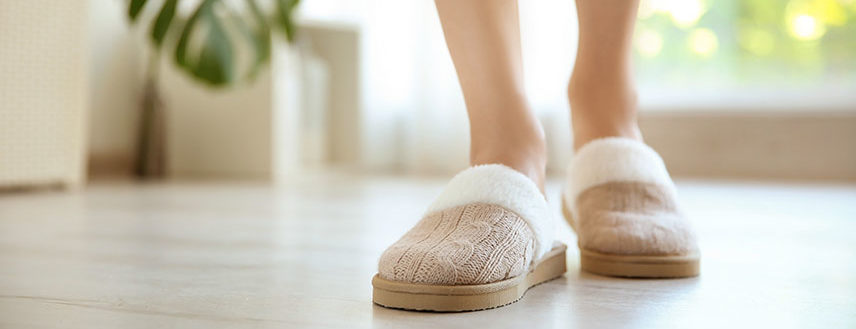
Winter means dry cracked feet for many people. If you’re managing diabetes, you are at an increased risk of developing issues with your feet. Diabetes increases your risk of dry skin, calluses, corns, bunions, blisters and ulcers. And while these issues aren’t a big problem for the general population, your high blood sugar means they can become gateways to potentially disabling infections. But with proper winter diabetic foot care, you can combat the problem.
High blood sugar levels cause nerve damage. Researchers believe that blood sugar may have a negative effect on the nervous system’s cells and enzymes and that those damaged nerves may lead to diabetic neuropathy, a condition in which you lose the feeling in your feet and hands. According to the National Institute of Diabetes and Digestive and Kidney Diseases, neuropathy occurs in roughly 70 percent of people with diabetes and its symptoms can result in harmful infections. Think about it. If you can’t feel your feet, you are not likely to notice any minor wounds that may become infected.
Neuropathy is also the cause of dry skin experienced by many people with diabetes and made worse during the dry winter months. The disabled nerves in your feet can’t receive the brain’s message to sweat leading to exceedingly dry feet. The cracking that ensues allows for germs to enter the body. Luckily there are steps you can take for winter diabetic foot care.
- Don’t Go Barefoot – When you’re at home in the winter months, it’s best to always have your feet protected. Make a habit of wearing slippers or socks with rubber anti-slip pads to avoid little scrapes and cuts that could become infected.
- Inspect Feet Daily – Inspect your feet every day for cracks, wounds or sores. Nerve damage can erase feeling in the feet. Look for any changes and if you can’t see the bottoms of your feet yourself, use a mirror or ask for help.
- Shop Wisely for Footwear – Diabetes requires more attention to footwear choices. Look for shoes with a wider toe box and no interior seams that could rub and cause blisters. Also choose socks without seams made from a wool blend that helps reduce moisture.
- Keep Your Feet Dry – After showering or bathing, be sure to towel off your feet well, even between your toes. Moist skin can break down and lead to infection. If you’re using moisturizer to treat dry, cracked skin, do not put it between your toes.
- See a Podiatrist – A podiatrist is trained in foot care and you should make a point of seeing one regularly to get checked out.

Leave a Reply